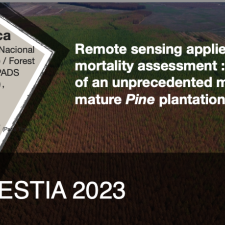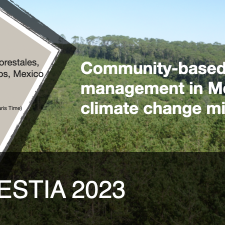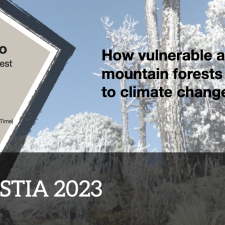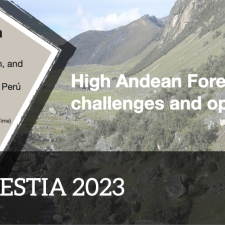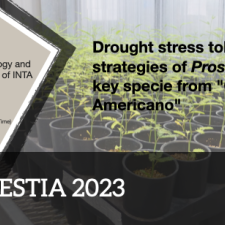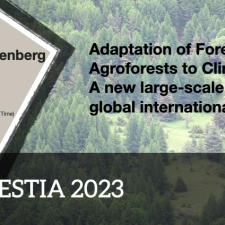Notice
#5 Drivers of diversity structuration in black poplar (Populus nigra L.)
- document 1 document 2 document 3
- niveau 1 niveau 2 niveau 3
Descriptif
Abstract
Black poplar (Populus nigra L.) is among the tree species having the largest natural distribution in Europe, from West Great Britain to West Asia, and from the foot of the Ural Mountains to the North of Africa. Thus, this species is potentially subjected to a wide variation of climatic conditions. Previous studies on variability of traits in this species showed structure and different distribution patterns depending on the trait, demonstrating potential local adaptation. In the last decade, we have developed molecular tools to study the factors shaping the diversity of the species. Today, these tools allow us to detect patterns of selection along the genome, to identify polymorphism involved in adaptative traits, to model demographic history of the species, and to evaluate how gene flow impact structure of populations. These molecular tools and results constitute the toolbox for breeding and conservation programs of black poplar.
Thème
Dans la même collection
-
#7 Remote sensing applied to forest mortality assessment : the case study of an unprecedented morta…
GaticaGabrielSEMINAR # 7 « Remote sensing applied to forest mortality assessment : the case study of an unprecedented mortality event in mature Pine plantations in Argentina » Dr. Gabriel Gativa CIGEOBIO
-
Webinaire international – Laboratoire International Associé FORESTIA
RozenbergPhilippePortéAnnabelJesúsVargas-HernándezGuillerminaDalla-SaldaFernandezMaria-ElenaMarcucci PoltriSusana NoemiDuplex France-Argentine à l’occasion du 5ème anniversaire du Laboratoire international associé FORESTIA
-
#6 Community-based forest management in Mexico and climate change mitigation
Angeles-PérezGregorioSEMINAR # 6 : "Community-based forest management in Mexico and climate change mitigation " Gregorio Ángeles-Pérez (Colegio de Postgraduados, Mexico)
-
#4 How vulnerable are the high mountain forests of Mexico to climate change ?
Gómez GuerreroArmandoSEMINAR # 4 "How vulnerable are the high mountain forests of Mexico to climate change ?" Dr Armando Gómez Guerrero Graduate program in Forest Science, Colegio de Postgraduados, Mexico
-
#3 High Andean Forests: challenges and opportunities
Boza EspinozaTatianaSEMINAR # 3 « High Andean Forests: challenges and opportunities » Tatiana Boza Espinoza Institute for Nature, Earth, and Energy (INTE), Pontificia Universidad Católica del Perú May 19th,
-
#2 Drought stress tolerance strategies of Prosopis alba, a key specie from "Gran Chaco Americano"
DiegoLopez LauensteinSEMINAR # 2 : Drought stress tolerance strategies of Prosopis alba, a key specie from "Gran Chaco Americano", Diego López Lauenstein, Institute of Plant Physiology and Plant Genetic Resources of INTA
-
#1 Adaptation of Forests and Agroforests to Climate Change: A new large-scale, long-term, global in…
RozenbergPhilippeSEMINAR # 1 : "Adaptation of Forests and Agroforests to Climate Change: A new large-scale, long-term, global international initiative" Philippe Rozenberg (INRAE Val de Loire, Orléans, France)


